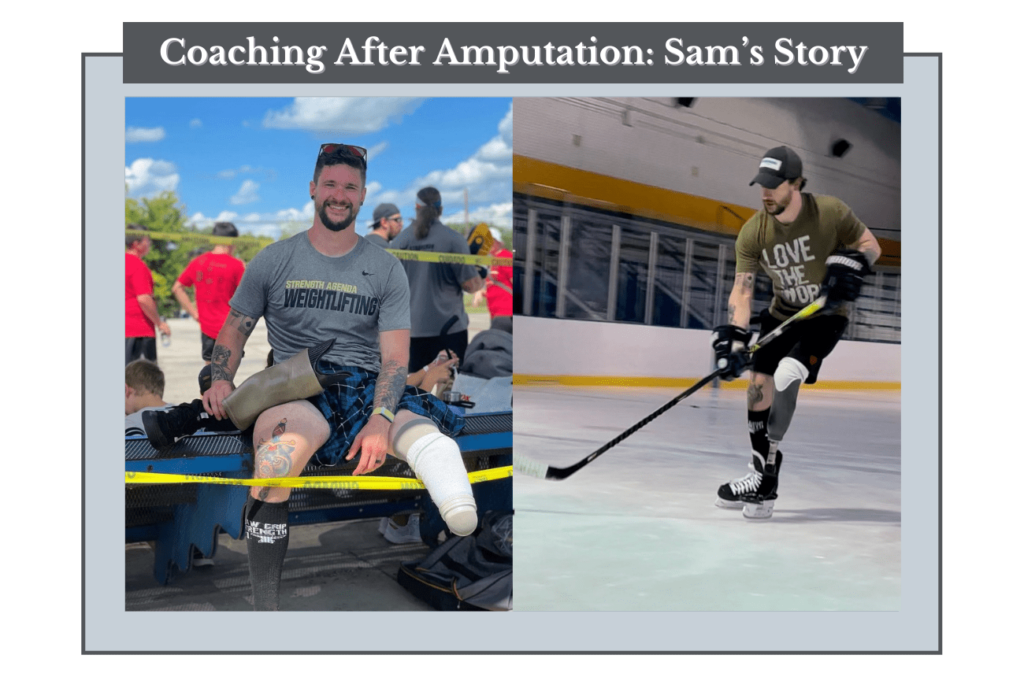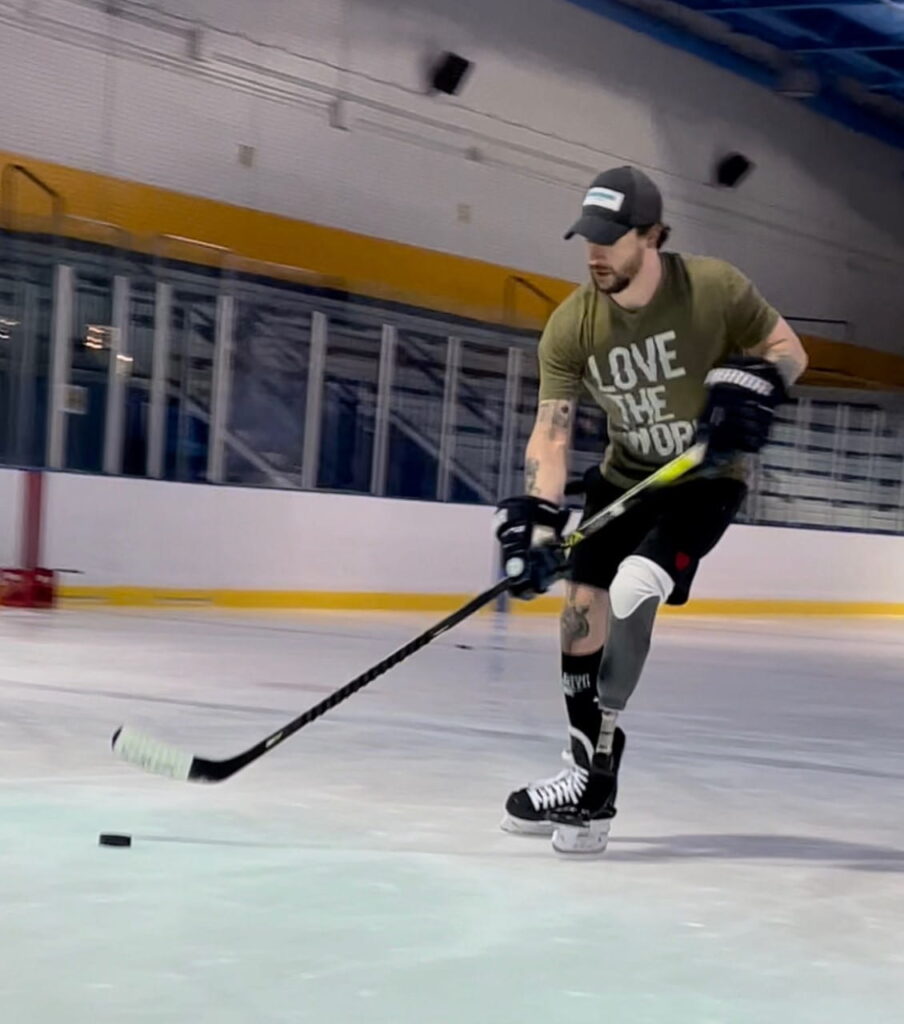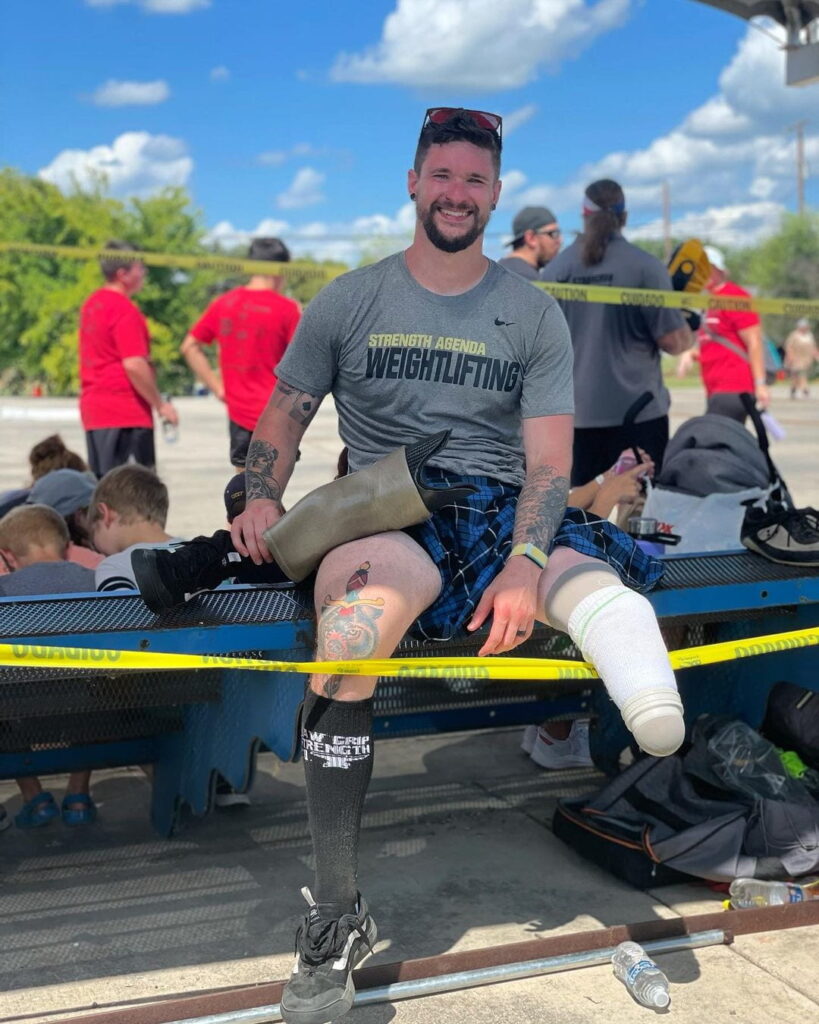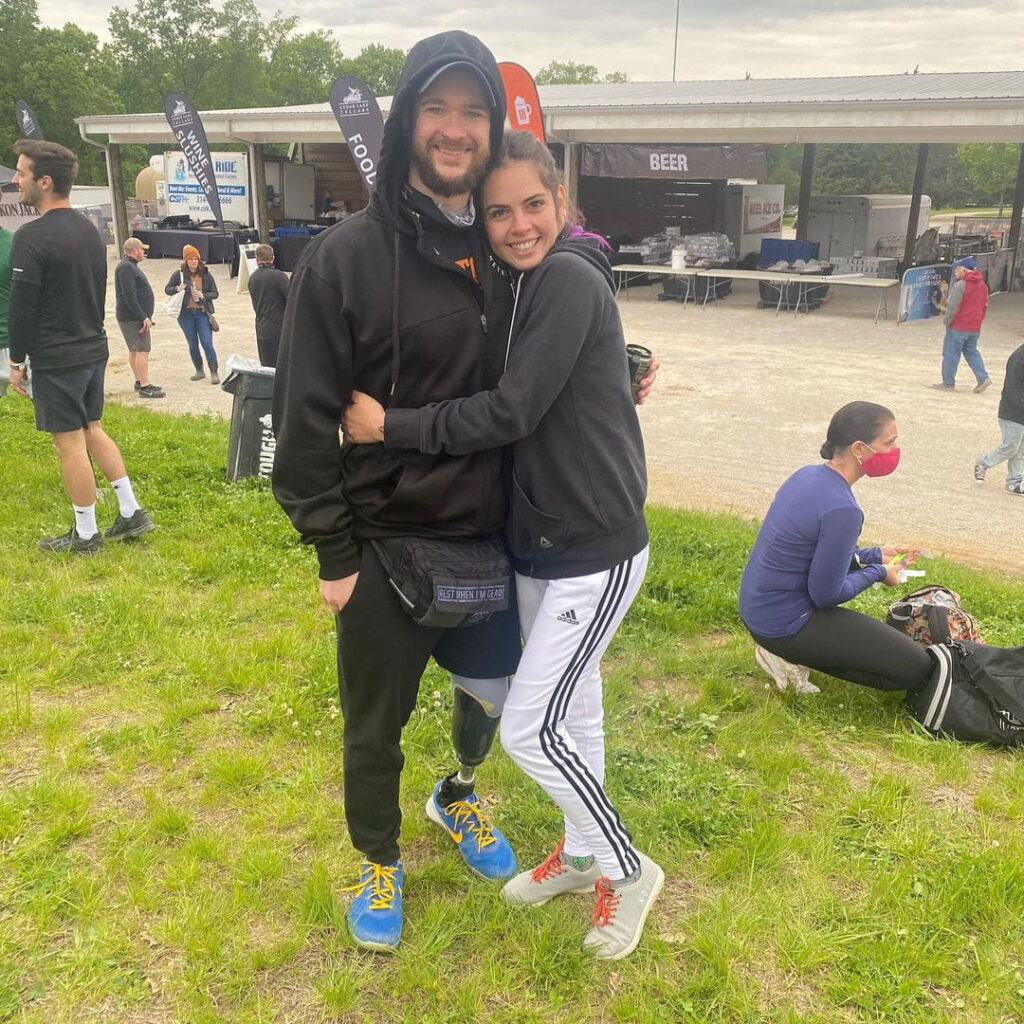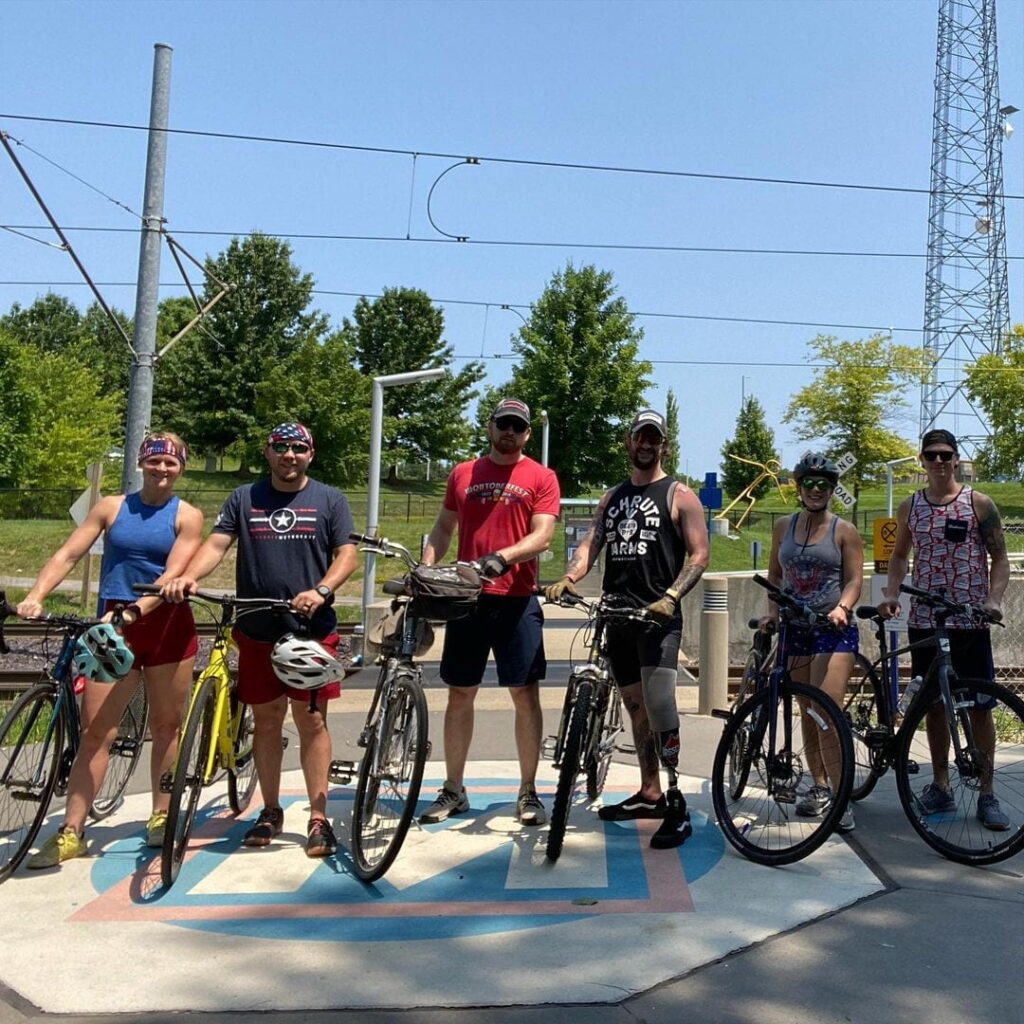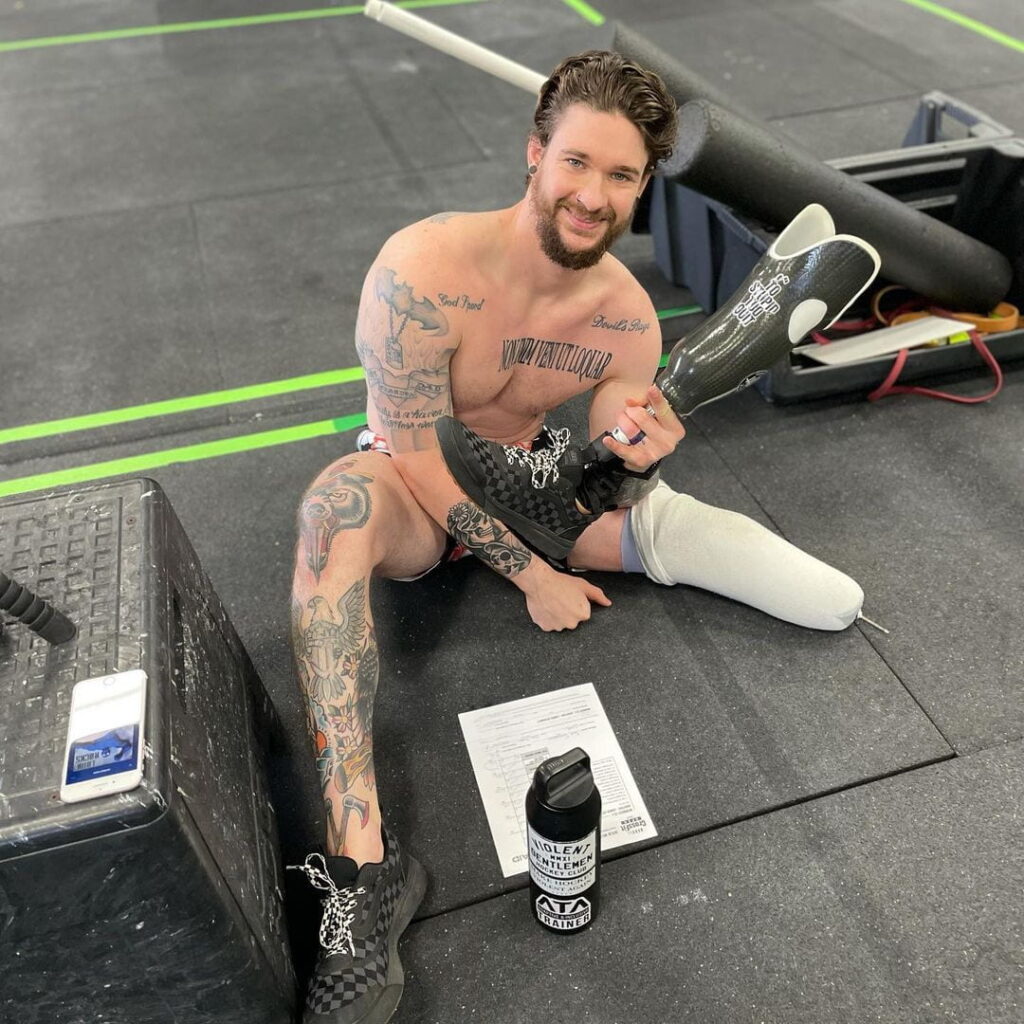Sam Schaefer is young, healthy and active. He is the head coach at a St. Louis-area gym specializing in high-intensity workouts. His favorite hobbies include hockey and paddle boarding. Schaefer is the last person you would think might need an amputation, but after an injury he sustained over a decade ago left him with chronic, severe pain, Schaefer needed to find a way to treat that pain so he could go on living his active lifestyle. Schaefer met with plastic and reconstructive surgeon and Washington University Limb Preservation Program Co-director John Felder, MD. Together, they cured Schaefer’s pain and mobility issues, returning him to the life he loves.
Complex regional pain syndrome (CRPS) is a condition that involves excess and prolonged pain and inflammation that follows an arm or leg injury. According to the National Institute of Neurological Disorders and Stroke, most people with CRPS recover over a few months or years, as the nerves in the injured area regrow. In rare cases like Schaefer’s, however, prolonged severe pain can linger and cause long-term disability.
“From the moment I got hurt, I didn’t have a single second without pain,” Schaefer says. “The level of pain continued to rise and swell. I struggled with function of my left foot. I couldn’t get all of my toes to move when I wanted them to. I was coaching on a crutch because of how bad this had become.”
Where it Hurts
“Complex regional pain syndrome is surgically treatable but requires a high level of expertise in peripheral nerve surgery,” says Dr. Felder, who has written a textbook chapter on CRPS. “The pain can be mediated by both the peripheral and central nervous system. This means that the pain can come from the nerves in the affected limb, the nerves in the brain and spinal cord, or both.”
Surgeons who specialize in peripheral nerve surgery are rare. Experts in CRPS and advanced amputation techniques are rarer still.
“Because pain is a subjective, personal experience, it can be difficult for many patients to precisely convey that experience,” Dr. Felder says. “For the surgery to be successful, there has to be a combination of expertise and communication.”
Schaefer injured his left foot during a training exercise shortly after joining the military. Since then, he experienced constant pain in the affected foot. The pain disrupted his sleep and impacted his ability to coach and train at the gym he leads. It also took a toll on his personal life. Schaefer sought treatment from local doctors for years, from rehab and physical therapy to psychotherapy and nerve treatments, but nothing eased his constant pain. When nothing else worked, Schaefer started to consider amputation.
Surgical amputation is a serious, irreversible procedure that involves removal of a body part. Limb loss is life-altering and can lead to several major problems for some people. These problems can include higher lifetime health-care costs, risk of developing mental health conditions and increased risk of further amputation.
In most cases, Washington University limb preservation surgeons provide alternative solutions to amputation. If another procedure can meet a patient’s goals while preserving the affected limb, avoiding amputation is usually the best option. The Washington University Limb Preservation Program also offers expedited second opinions for patients who have been told they may need an amputation.
Amputation for CRPS is generally considered a last resort because there is a chance that the pain will continue or even become worse after surgery. Understandably, doctors were hesitant to consider Schaefer for amputation. He saw several doctors across the St. Louis region who dismissed his request for below-the-knee amputation.
“Previously, I had run into a lot of resistance because of the stigma around amputation,” Schaefer says. “I knew from the first appointment that Dr. Felder was different.”
Willing to Trust
“Dr. Felder was the first doctor I met who truly understood what I was going through,” Schaefer recalls. “Dr. Felder was willing to listen, and he was willing to trust. When he saw that I was doing the right things to promote my healing and stay healthy, Dr. Felder trusted me. And I trusted him.”
As a Washington University plastic and reconstructive surgeon, Dr. Felder has expertise in nerve, microvascular and amputation surgery. He is a fellowship-trained peripheral nerve surgeon, and he has published extensive research on the negative impact of delaying chronic nerve injury surgery, how nerve surgery reduces opioid use, and the economic burden of chronic nerve injury. Dr. Felder runs a clinic specifically for amputees. He performs patient evaluations for amputation candidates alongside an expert prosthetist, prescribes prosthetic devices and rehabilitation, and sees amputees in need of surgery after amputation.
“Patients with chronic nerve injuries are frequently shuffled around between doctors because so few physicians have expertise in peripheral nerve injuries,” says Dr. Felder. “Unfortunately, this often results in delays in care, chronically poor quality of life and poorer ultimate outcomes. I want patients to know that, when they see me, they are receiving comprehensive care. If amputation is the right treatment, I take pride in following my patients and ensuring that they receive their prosthesis and rehabilitation as early as possible.”
To be sure that amputation was right for him, Schaefer saw a therapist. He wanted to know for certain that he was making this decision with a clear head and sound mind. After all, this was a major decision that would impact the rest of his life. He understood that, with or without the surgery, he could end up in a wheelchair for the rest of his life. Schaefer had conversations with Dr. Felder about the procedure, its risks and the possible outcomes. Together, they decided to go through with the procedure at the Center for Advanced Medicine.
Outcomes-oriented Amputation
This below-the-knee amputation was Schaefer’s first ever surgery. After the operation, Schaefer woke up to something he hadn’t felt in almost a decade: no pain.
“I couldn’t believe it,” Schaefer says. “For the first time since my injury, I could live my life without pain. My brain didn’t have to process immense amounts of pain anymore. The first thing I did was call my wife. I couldn’t wait to tell her that it worked.”
As part of the surgery, Dr. Felder performed a procedure called the Ertl technique. This type of operation, also known as an osteomyoplastic procedure for transtibial amputation, creates a highly functional residual limb. Dr. Felder also performed a new nerve transfer technique called targeted muscle reinnervation (TMR), which has been shown to prevent and treat nerve pain and phantom pain after amputations.
“During surgery, I confirmed that Sam suffered from compression of the superficial peroneal nerve, caused by a bone spoke from a fibular malunion,” Dr. Felder says. “This never would have resolved without surgery. Because the responsible nerve injury was distal to the level of amputation, we were able to effectively treat his CRPS and cure him of his pain.”
If Sam had received a traditional amputation from a surgeon who did not specialize in these techniques, even if it cured the pain, he would not have been able to do the things he loved. Weight-bearing exercises and certain types of movements would have been impossible without the advanced techniques used by Dr. Felder. Schaefer’s surgery empowered him to successfully use a prosthetic limb to do all the things he was most passionate about.
“I specifically planned his surgery to allow him to be as physically active as possible,” Dr. Felder says. “The Ertl and TMR components made it possible for him to bear weight, twist and spin in ways that a traditional amputation would not. When we perform amputations, it is always with the patient’s goals and future quality of life in mind. Washington University surgeons offer outcomes-oriented amputations.”
Bridging the Gap
With this freedom from pain, and with increased mobility, Schaefer felt like he had a new lease on life. He became even more physically active now that he could move without the constant pain in his foot. Schaefer found a prosthetic limb with an ice skate, which he uses for hockey. He holds multiple adaptive world records, including one for the para-standing light hammer throw.
“Seeing Sam get his life back, with no pain and no limitations, has been extremely rewarding for me,” says Dr. Felder. “It is even more inspiring to see him turn this into an opportunity to help others. I know that will be his legacy. I am just proud to have been a part of this incredible man’s life story.”
Throughout his journey, Schaefer learned to safely move and exercise without the use of the foot affected by his CRPS. He had to be able to teach safe techniques for lifting and other forms of exercise to continue as a coach. Now, equipped with this knowledge and a renewed sense of purpose, Schaefer is giving back. He has developed a training program to teach adaptive and inclusive exercise techniques to people with disabilities.
“I want to help people bridge the gap after amputation,” Schaefer says. “I’ve been teaching my whole life. Now I have the opportunity to give back by teaching true amputee knowledge. I’m going to teach people how to train as an amputee, how to use their device, how to build strength and mobility. Dr. Felder helped me get to where I am today. Now I owe it to the adaptive community to give back by sharing what I’ve learned along the way.”
